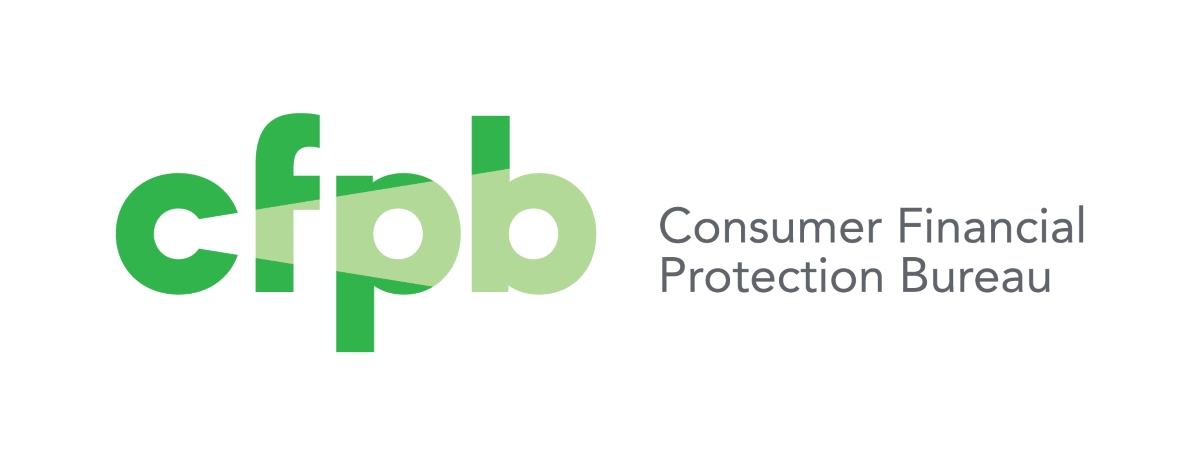Home>Finance>What Is The Bureau Code For The Consumer Financial Protection Bureau


Finance
What Is The Bureau Code For The Consumer Financial Protection Bureau
Modified: December 30, 2023
Learn about the Consumer Financial Protection Bureau's bureau code and how it relates to finance. Discover the key information you need.
(Many of the links in this article redirect to a specific reviewed product. Your purchase of these products through affiliate links helps to generate commission for LiveWell, at no extra cost. Learn more)
Table of Contents
Introduction
When it comes to the world of finance, there are numerous organizations and agencies responsible for overseeing and regulating different aspects of the industry. One such organization that plays a crucial role in protecting consumers’ financial interests is the Consumer Financial Protection Bureau (CFPB). As an independent agency of the United States government, the CFPB’s primary mission is to ensure fair treatment for consumers and promote transparency and accountability in the financial marketplace.
As part of its operations, the CFPB utilizes a unique identification system known as the Bureau Code. This code serves as a reference and enables the CFPB to effectively categorize and manage various financial activities, transactions, and consumer complaints. It provides a standardized framework for identifying specific entities or transactions within the financial sector.
The Bureau Code system is crucial for maintaining accurate records, enhancing regulatory oversight, and facilitating efficient communication between the CFPB, financial institutions, and other stakeholders. Understanding these codes and their significance is important for anyone involved in the financial industry, including consumers, businesses, and regulatory bodies.
In this article, we will delve deeper into the concept of Bureau Codes, their importance, and specifically explore the Bureau Code for the Consumer Financial Protection Bureau. We will also discuss how these codes are used, their application, and the benefits they bring to the financial sector.
Understanding the Bureau Code
The Bureau Code is a unique identifier used by the Consumer Financial Protection Bureau (CFPB) to categorize and track various entities and transactions within the financial industry. It is a standardized coding system that helps the CFPB efficiently manage data and communicate with different stakeholders, including financial institutions, consumers, and regulatory bodies.
Each Bureau Code consists of a combination of letters and numbers that represent specific categories, subcategories, or types of financial activities. These codes provide a clear and structured framework for organizing and classifying information related to consumer complaints, financial products and services, and regulatory actions.
By utilizing the Bureau Code system, the CFPB can effectively monitor and regulate the financial marketplace. It allows them to identify trends, spot potential issues or violations, and take appropriate actions to protect consumers. The codes also facilitate easier collaboration and data sharing between the CFPB and other regulatory agencies.
It’s important to note that the Bureau Code is not publicly available in its entirety. Certain codes may be accessible to the public, while others are designed solely for internal use by the CFPB and authorized entities. This helps protect sensitive information and maintain the integrity of the regulatory process.
Understanding the Bureau Code is crucial for financial institutions and businesses operating under the jurisdiction of the CFPB. It enables them to align their operations and reporting requirements with the regulatory guidelines set by the agency. By ensuring compliance with the Bureau Code, businesses can demonstrate their commitment to consumer protection and avoid potential penalties or sanctions.
For consumers, having a basic understanding of the Bureau Code can be helpful when filing complaints or seeking assistance from the CFPB. It allows them to provide accurate and relevant information regarding the nature of their financial concern, which in turn helps the CFPB address their issues more effectively.
Overall, the Bureau Code system plays a fundamental role in maintaining transparency, accountability, and regulatory oversight in the financial industry. It serves as a vital tool for the CFPB, enabling them to fulfill their mission of safeguarding consumers and promoting a fair and competitive financial marketplace.
Significance of Bureau Codes
Bureau Codes hold significant importance in the realm of finance and consumer protection. They serve multiple purposes and offer several benefits to both the Consumer Financial Protection Bureau (CFPB) and various stakeholders within the financial industry.
One of the primary significances of Bureau Codes is their role in organizing and managing data. The codes provide a standardized system for categorizing and classifying different types of financial activities, transactions, and entities. This allows the CFPB to organize vast amounts of information in a structured manner, making it easier to analyze, track, and report on various aspects of the financial marketplace.
Furthermore, Bureau Codes enhance the accuracy and efficiency of data analysis. By assigning specific codes to different categories and subcategories, the CFPB can quickly retrieve and analyze information related to specific products, services, or regulatory issues. This enables them to identify trends, patterns, and potential areas of concern more effectively, facilitating prompt regulatory action and consumer protection.
Bureau Codes are also vital for communication and collaboration between the CFPB and other regulatory bodies within the financial industry. These codes provide a common language and framework for exchanging information, facilitating smoother coordination and data sharing. This promotes a more unified and integrated approach to regulatory oversight and enforcement.
For financial institutions, understanding and implementing Bureau Codes is essential for compliance with regulatory requirements. The codes provide clarity on reporting obligations and ensure consistent and accurate data submission. By adhering to the Bureau Code standards, financial institutions can demonstrate their commitment to compliance and consumer protection, which in turn enhances trust and confidence among consumers.
The significance of Bureau Codes extends beyond regulatory compliance. They also contribute to transparency and accountability within the financial industry. By using codes to identify and track complaints, investigations, and enforcement actions, the CFPB can provide consumers and stakeholders with valuable insights into the agency’s activities. This promotes trust and credibility, as well as fosters a more informed and transparent financial marketplace.
Overall, Bureau Codes play a crucial role in maintaining order, efficiency, and effectiveness within the regulatory landscape. They enhance data management, streamline communication, promote compliance, and contribute to transparency and accountability. By utilizing Bureau Codes, the CFPB can fulfill its mission of protecting consumers and promoting fair and competitive financial practices.
Consumer Financial Protection Bureau (CFPB)
The Consumer Financial Protection Bureau (CFPB) is an independent agency of the United States government that was created under the Dodd-Frank Wall Street Reform and Consumer Protection Act in 2010. The CFPB’s primary mission is to protect consumers in the financial marketplace, promote fair practices, and ensure transparency and accountability among financial institutions.
The CFPB has the authority to enforce federal consumer financial laws and regulations, supervise financial institutions, and provide consumers with information and tools to make informed financial decisions. It covers a wide range of financial products and services, including mortgages, credit cards, student loans, auto loans, payday loans, and more.
One of the core functions of the CFPB is to educate and empower consumers. It provides resources, tools, and information to help individuals understand their rights and responsibilities when engaging with financial institutions. The agency also offers guidance on topics such as debt management, credit reporting, and financial fraud prevention.
In addition to consumer education, the CFPB actively monitors the financial industry to ensure compliance with consumer protection laws. The agency conducts examinations and investigations to identify and address unfair, deceptive, or abusive practices. It also handles consumer complaints and takes appropriate action to resolve them, including pursuing enforcement actions against violators.
The CFPB’s regulatory oversight extends to both large financial institutions and smaller entities. The agency strives to level the playing field and ensure that all market participants, regardless of their size, adhere to the same high standards of consumer protection. This helps create a fair and competitive financial marketplace.
Furthermore, the CFPB advocates for consumers’ rights by issuing rules and regulations that address emerging consumer financial issues. It consults with industry stakeholders, consumer advocacy groups, and other regulatory bodies to develop effective policies and guidelines that promote market transparency and fairness.
The agency also plays a key role in promoting financial inclusion and combating discrimination. It works to ensure equal access to financial services for underserved communities and takes action against lenders or other entities engaged in discriminatory practices based on race, ethnicity, gender, or other protected characteristics.
Overall, the Consumer Financial Protection Bureau (CFPB) serves as a dedicated advocate for consumers in the financial marketplace. Through its enforcement powers, consumer education initiatives, and regulatory oversight, the CFPB works to create a more transparent, fair, and accountable financial industry that serves the best interests of consumers.
What is the Bureau Code for CFPB?
The Bureau Code assigned to the Consumer Financial Protection Bureau (CFPB) is a unique identifier used to classify and track the activities and operations of the agency. The Bureau Code serves as a reference for the CFPB and other stakeholders in the financial industry when accessing and sharing relevant information.
While the specific details of the Bureau Code for the CFPB are not publicly disclosed in their entirety, it is known that the code consists of a combination of letters and numbers that represent the agency. This code allows the CFPB to be distinguished from other entities within the financial sector.
The Bureau Code for the CFPB is primarily used internally within the agency and by authorized entities for data management and communication purposes. It helps ensure that information related to the CFPB’s activities, such as consumer complaints, enforcement actions, and regulatory initiatives, is accurately categorized and easily accessible when needed.
While the Bureau Code itself may not be widely known or utilized by the general public, it is a critical component of the CFPB’s operations. It is utilized by the agency to effectively monitor and regulate the financial marketplace, identify trends or patterns, and address potential issues or violations that may impact consumers.
Financial institutions and entities under the jurisdiction of the CFPB may have access to certain aspects of the Bureau Code to align their operations and reporting requirements with regulatory guidelines. This helps ensure compliance and facilitates effective communication with the agency.
It’s important to note that the Bureau Code for the CFPB is subject to periodic updates or changes to reflect evolving needs and advancements within the financial industry. These updates are intended to enhance the agency’s ability to carry out its mission of protecting consumers and maintaining a fair and transparent financial marketplace.
Overall, while the exact details of the Bureau Code for the CFPB may not be publicly disclosed, it remains a vital tool for the agency’s internal operations and communication with other stakeholders. It helps streamline data management, regulatory oversight, and enforcement activities, ultimately contributing to the CFPB’s efforts to safeguard consumers’ financial interests.
Applying and Utilizing the Bureau Code
Applying and utilizing the Bureau Code is a crucial aspect of the Consumer Financial Protection Bureau (CFPB)’s operations and the financial industry as a whole. While the specific details of the Bureau Code for the CFPB may not be publicly disclosed, understanding its application and utilization is important for various stakeholders in the financial sector.
Financial institutions, including banks, credit unions, mortgage lenders, and other entities under the jurisdiction of the CFPB, play a key role in applying the Bureau Code to their operations. They use the code to categorize and report data in alignment with regulatory requirements. This ensures consistent and accurate reporting to the CFPB, facilitating effective oversight and regulatory compliance.
By utilizing the Bureau Code, financial institutions can demonstrate their commitment to consumer protection, transparency, and accountability. It allows them to accurately identify and categorize various products, services, transactions, and complaints, enhancing their ability to respond appropriately and address any issues that may arise.
For consumers, understanding the Bureau Code can be beneficial when interacting with the CFPB. It enables them to provide accurate and relevant information when filing complaints or seeking assistance. By including the relevant Bureau Code, consumers can help the CFPB understand the nature of their financial concerns more effectively, leading to prompt and appropriate action.
The Bureau Code also plays a crucial role in facilitating communication and collaboration between the CFPB and other regulatory bodies. It provides a common language and framework for sharing and exchanging information related to consumer complaints, enforcement actions, and regulatory initiatives. This promotes seamless coordination and enhances regulatory effectiveness.
Furthermore, the Bureau Code system allows the CFPB to maintain accurate records and analyze data related to consumer complaints and industry trends. It enables the agency to identify patterns of unfair or deceptive practices, monitor market activities, and target their regulatory efforts accordingly. This contributes to the overall goal of protecting consumers and ensuring a fair and competitive financial marketplace.
In addition to its application within the CFPB, the Bureau Code may also be utilized by authorized entities involved in regulatory oversight or data analysis. These entities can access and utilize the Bureau Code to categorize and track industry-wide trends, consumer complaints, and regulatory actions. This facilitates a comprehensive understanding of the financial marketplace and enhances the ability to identify systemic issues or emerging risks.
Overall, the application and utilization of the Bureau Code is essential for accurate reporting, regulatory compliance, effective communication, and data analysis within the financial industry. It helps ensure transparency, accountability, and consumer protection, making it a valuable tool for the CFPB and other stakeholders in the financial sector.
Conclusion
The Bureau Code plays a vital role in the operations of the Consumer Financial Protection Bureau (CFPB) and the broader financial industry. It serves as a unique identifier that helps categorize, organize, and track various financial activities, transactions, and entities. The Bureau Code enhances the accuracy and efficiency of data analysis, facilitates effective communication and collaboration, and promotes regulatory compliance and consumer protection.
Throughout this article, we have explored the importance of Bureau Codes and their significance in the context of the CFPB. We have learned how these codes enable the CFPB to fulfill its mission of safeguarding consumers and promoting transparency and accountability in the financial marketplace.
While the specific details of the Bureau Code for the CFPB are not publicly disclosed, understanding its application and utilization is crucial for financial institutions, consumers, and regulatory bodies. Financial institutions utilize the Bureau Code to align their operations with regulatory requirements and demonstrate their commitment to consumer protection.
For consumers, having a basic understanding of the Bureau Code can be beneficial when interacting with the CFPB. It allows them to provide accurate and relevant information, enabling the agency to address their concerns effectively.
Furthermore, the Bureau Code system facilitates communication and collaboration between the CFPB and other regulatory bodies. It provides a common language for data sharing, fostering coordinated efforts in protecting consumers and maintaining a fair financial marketplace.
In conclusion, the Bureau Code is an essential tool in promoting transparency, accountability, and consumer protection within the financial industry. It helps the CFPB regulate the marketplace, monitor industry trends, and address potential issues or violations. By aligning with this code, financial institutions and consumers contribute to a more orderly and equitable financial ecosystem.
As the financial industry continues to evolve, the Bureau Code system will likely adapt and evolve as well, ensuring its relevance and effectiveness in the years to come. By staying informed and adhering to the Bureau Code’s guidelines, all stakeholders can actively contribute to a healthier and more consumer-focused financial landscape.














